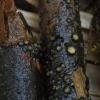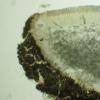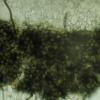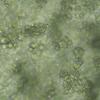
04-01-2026 17:45
 Stephen Martin Mifsud
Stephen Martin Mifsud
I was happy to find these orange asmocyetes which

03-01-2026 13:08
Niek SchrierHi all,We found groups of perithecia on a Lecanora

29-12-2025 17:44
Isabelle CharissouBonjour,J'aimerais savoir si d'autres personnes au

02-01-2026 17:43
MARICEL PATINOHi there, although I couldn't see the fruitbody, I

01-01-2026 18:35
Original loamy soil aside a artificial lake.The co

31-12-2025 19:27
Collected from loamy soil, at waterside (completel
Mollisia retincola
Juuso Äikäs,
20-05-2020 16:05
I was reading Fungi of Temperate Europe and the title's species struck me as quite distinctive and something that might be possible to identify. (Belonopsis retincola is apparently a synonym and Species Fungorum claims that Trichobelonium kneiffii is the current name.)
So I visited a small pond nearby that has Phragmites australis growing in it. I found these almost immediately, growing on dead, standing culms near the waterline.
This time I managed to get a clear yellow KOH reaction. The medulla has plentiful crystals in it and the spores measure 23.4 - 26 × 2.8 - 3.4 µm.
With the combination of these characteristics, I'm quite confident this is indeed M. retincola.
Mirek Gryc,
22-05-2020 19:12
Re : Mollisia retincola
Hi
IMHO, you marked well.
In my microscopic collections, the spore length range was more diverse. Maybe you only measured the longer ones?
To be sure, I would check croziers.
Mirek
In my microscopic collections, the spore length range was more diverse. Maybe you only measured the longer ones?
To be sure, I would check croziers.
Mirek
Juuso Äikäs,
22-05-2020 19:17
Re : Mollisia retincola
There weren't that many spores and I measured only five so that would probably explain it.
Mirek Gryc,
22-05-2020 19:42
Re : Mollisia retincola
This is a very common species on Phragmites australis. You will definitely meet him many more times.
Not all features are always compatible (variability?).
Mirek
Not all features are always compatible (variability?).
Mirek










